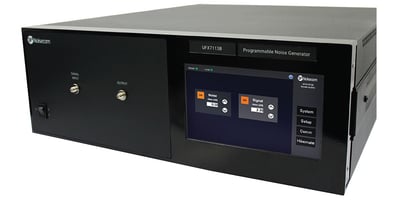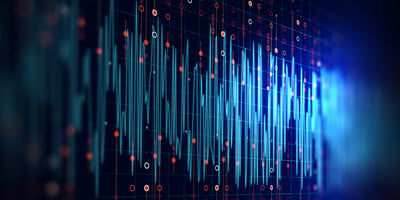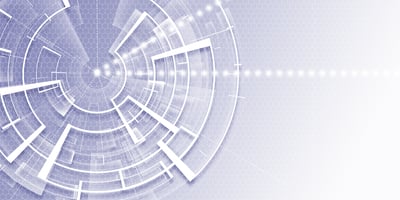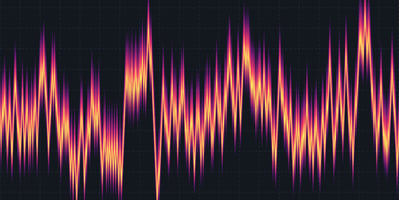Today we’re going to talk about noise. In this context, noise refers to unwanted signals, whether...
Want to Learn How to Analyze Advanced Wireless Systems? Visit Booth #1619 at IMS 2023
Next-generation systems need test equipment that offers a deep level of characterization. This blog post reviews four test and measurement essentials for today’s advanced wireless systems – amplifier linearity testing, fast-switching RF signal generation, phase noise analysis, and customizable additive white Gaussian noise (AWGN) generation.
Note: Those attending IMS 2023 in San Diego, California, will be able to see live demonstrations for each of these critical testing requirements from June 13 – June 15 at the Wireless Telecom Group booth #1619.
Amplifier Characterization
A linear amplifier reproduces its input at a greater output power without distorting the signal. Higher-order modulation schemes, such as m-QAM and OFDM, increase a signal’s peak-to-average power ratio (PAPR) or crest factor. Severe power peaks contrasted by relatively low average power can cause an amplifier to clip the highest points of a waveform, leading to signal distortions, symbol and bit errors, and amplifier nonlinearity.
Test solution: Boonton RTP5000 Series Real-time USB Peak Power Sensors can measure crest factor and show complementary cumulative distribution function (CCDF) curves for a statistical view of crest factor values. A PC loaded with the Boonton Power Analyzer software enables sensor and measurement control, while those needing a benchtop setup and USB sensor performance can opt for the Boonton PMX40 RF Power Meter.
Fast-switching Signal Generation.jpg?width=450&height=225&name=SGX-with_screen_RF_on_armed%20(1).jpg)
Frequency switching speed, phase noise, and cost are three important factors when choosing an RF signal generator. For example, swapping a local oscillator with a high-performance, low phase noise signal generator enables engineers to evaluate LO performance. To meet the needs of frequency-agile systems, signal generators that can sweep through a large range of frequency and amplitudes quickly can expedite test times.
Test solution: The Boonton SGX1000 Series RF Signal Generator uses a proprietary blend of direct digital and direct analog synthesis for ultra-low phase noise (-122 dBc/Hz at 3 GHz and 10 kHz offset) and fast frequency switching (350 µs). Offering 100,000 measurements per second, the Boonton RTP4000 Series True Average Power Sensor can capture and analyze results.
Low Phase Noise Signal Generation & Real-time Phase Noise Analysis
Poor LO performance can cause symbol errors in systems that use higher-order modulation. Excessive phase noise triggers a constellation diagram’s points to rotate around the origin, leading to waveform distortion and a reduction in performance. Signal generators that offer low phase noise are excellent candidates for LO substitution, while phase noise analyzers can provide accurate, reliable, and real-time analysis.

Test solution: The Holzworth HSX Series multi-channel RF synthesizers utilize VCO-based technology to offer ultra-low phase noise and exceptional spectral purity for LO substitution. The HA7062C and HA7062D Phase Noise Analyzers provide real-time phase noise analysis, both of which seamlessly integrate with the HA7063A heterodyne downconversion system, enabling absolute and residual (additive) measurements to 50 GHz without the need for external mixers.
Custom Noise Signal Generation

Modern systems must be able to operate in high-density wireless environments. Controllable AWGN generation can test a system's response to varying levels of RF interference, ensuring optimal performance under real-world conditions.
Test solution: The Noisecom UFX7000B Programmable AWGN Generator produces custom noise signals. With the UFX7000B, engineers can manipulate the carrier signal and noise floor in 0.1 dB steps over a 127 dB dynamic range. Boonton peak power sensors capture and analyze results in real time, working with the Windows-based Boonton Power Analyzer software for sensor and measurement control.
IMS 2023: Specialized Solutions for Next-Generation Systems
In addition to interactive booth demonstrations on powerful test and measurement solutions, IMS 2023 attendees can learn about different power sensor technologies, critical RF and microwave power measurements, and ideal power sensor capabilities for radar and communications systems in the MicroApp presentation, “I Know I Need to Measure RF Power – Now What?”
The technical session will take place June 14, 2023, at 9:45 AM Pacific in the IMS MicroApps Theater, booth #2447.



